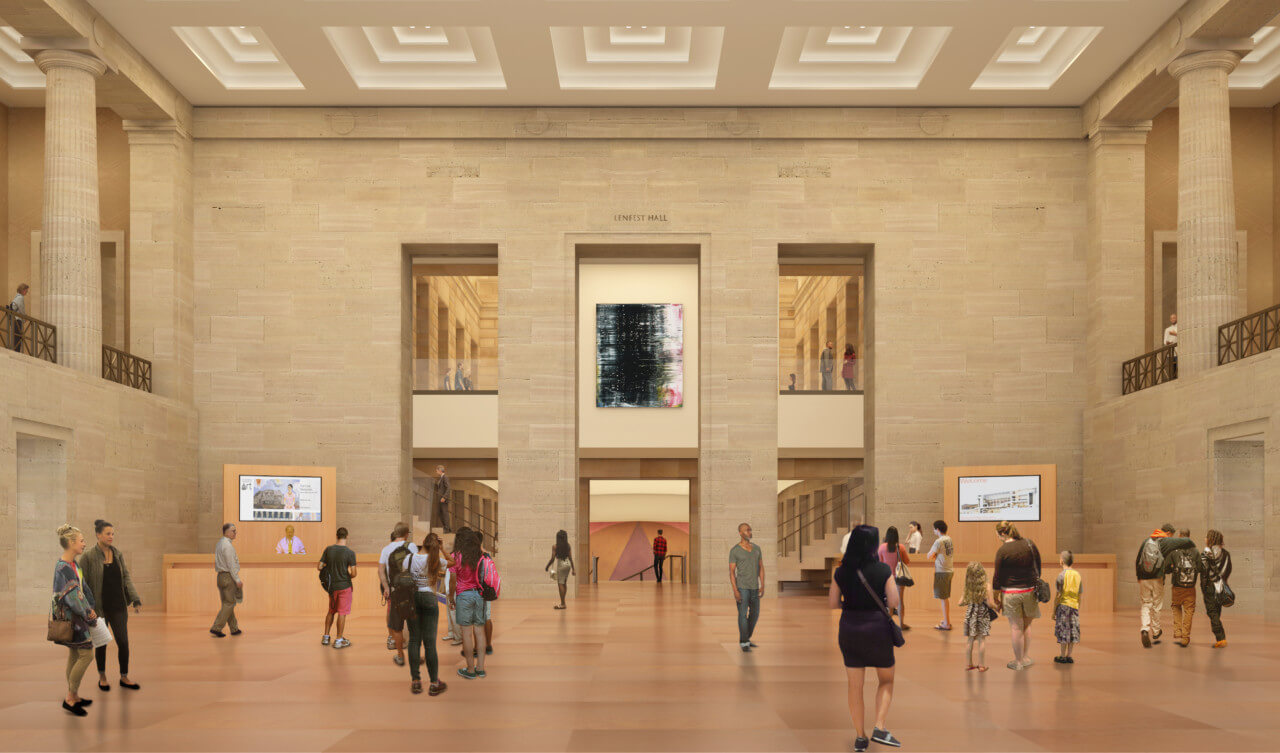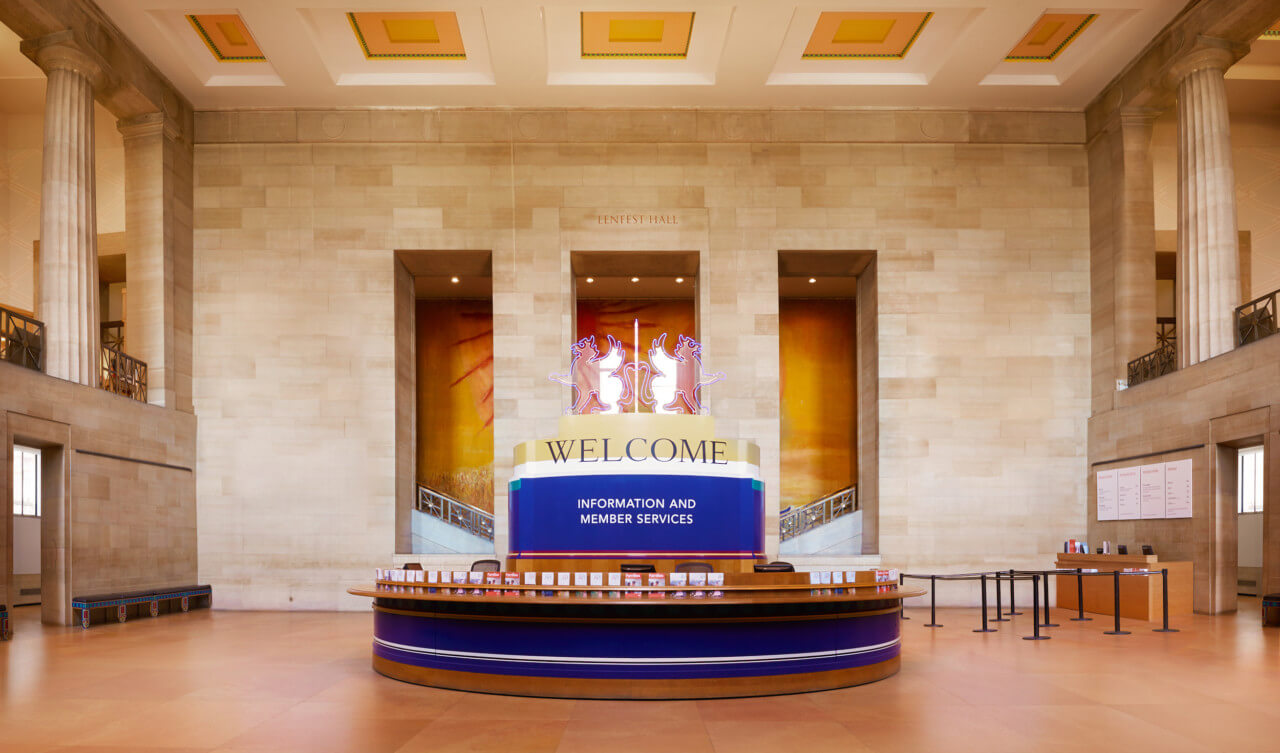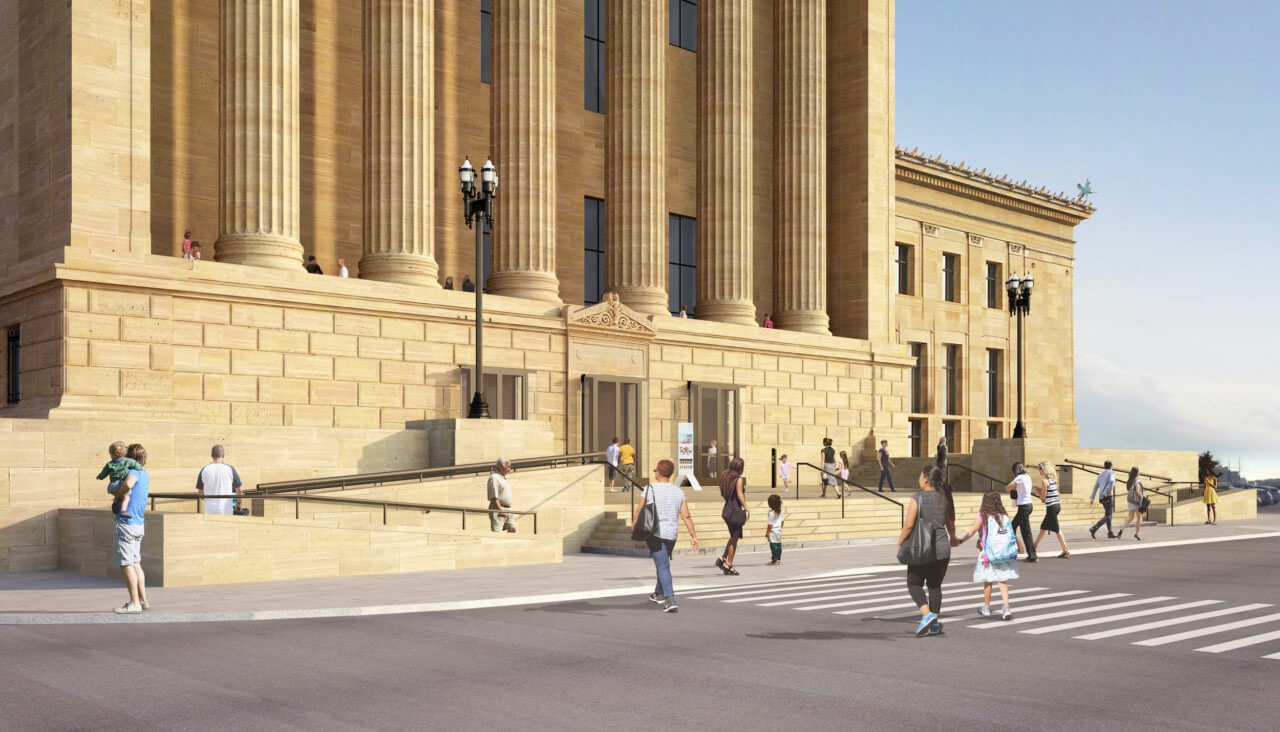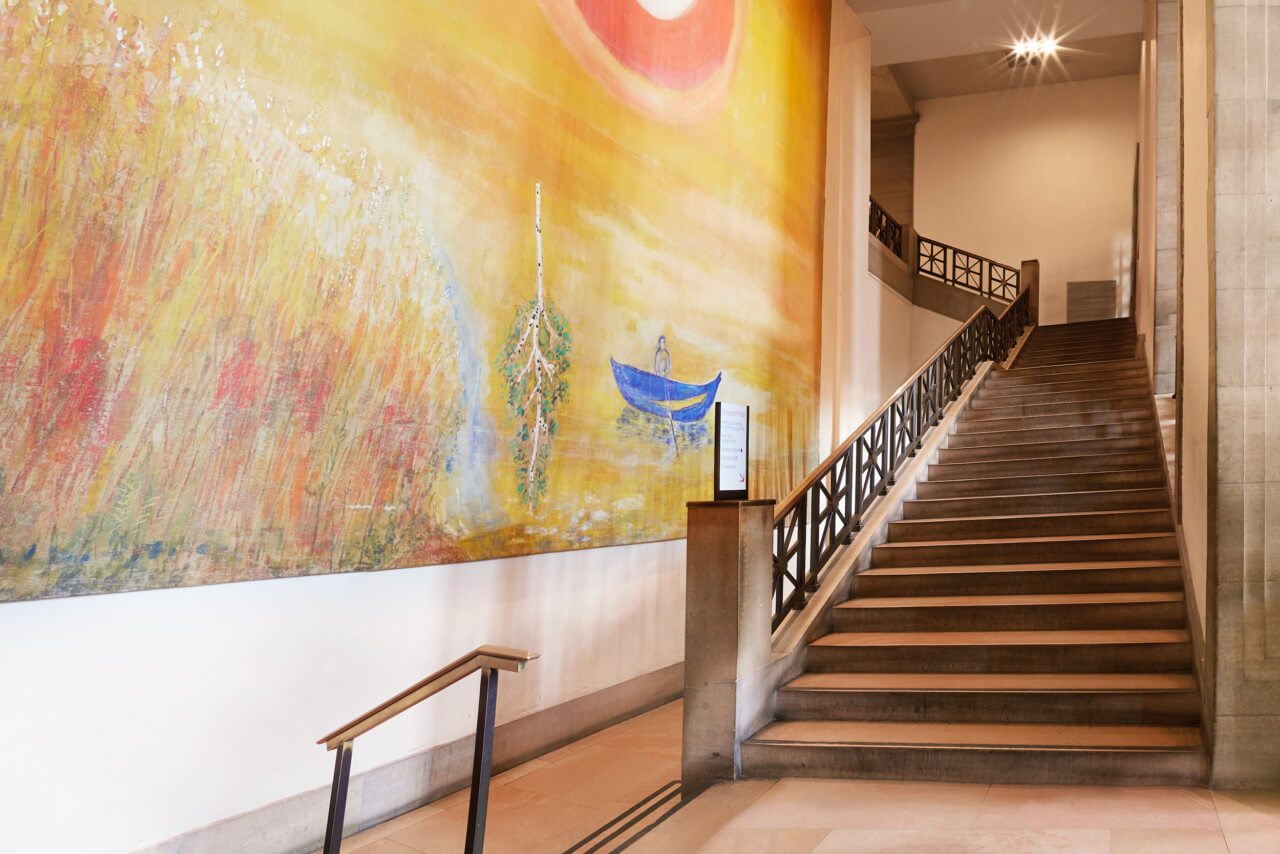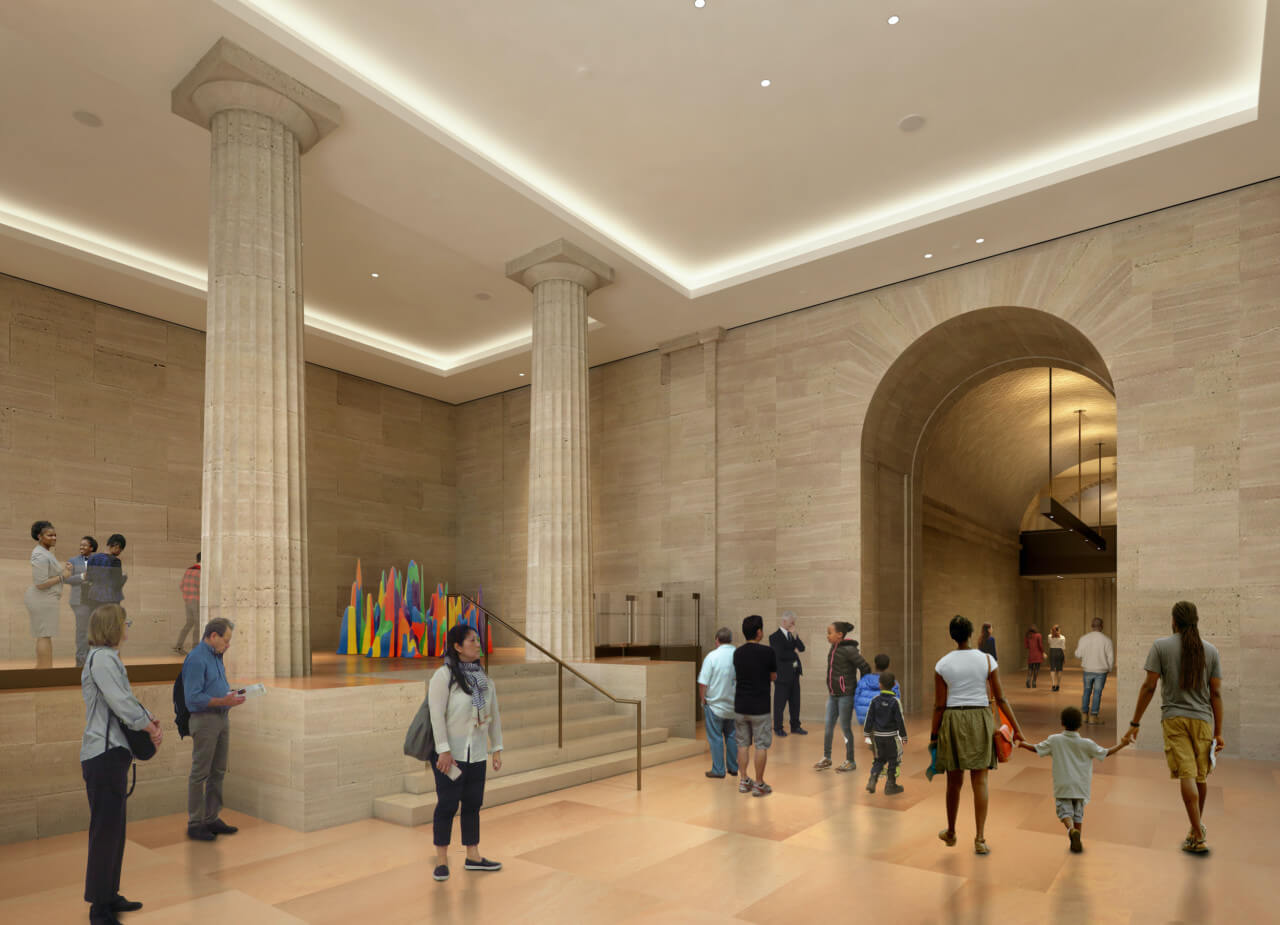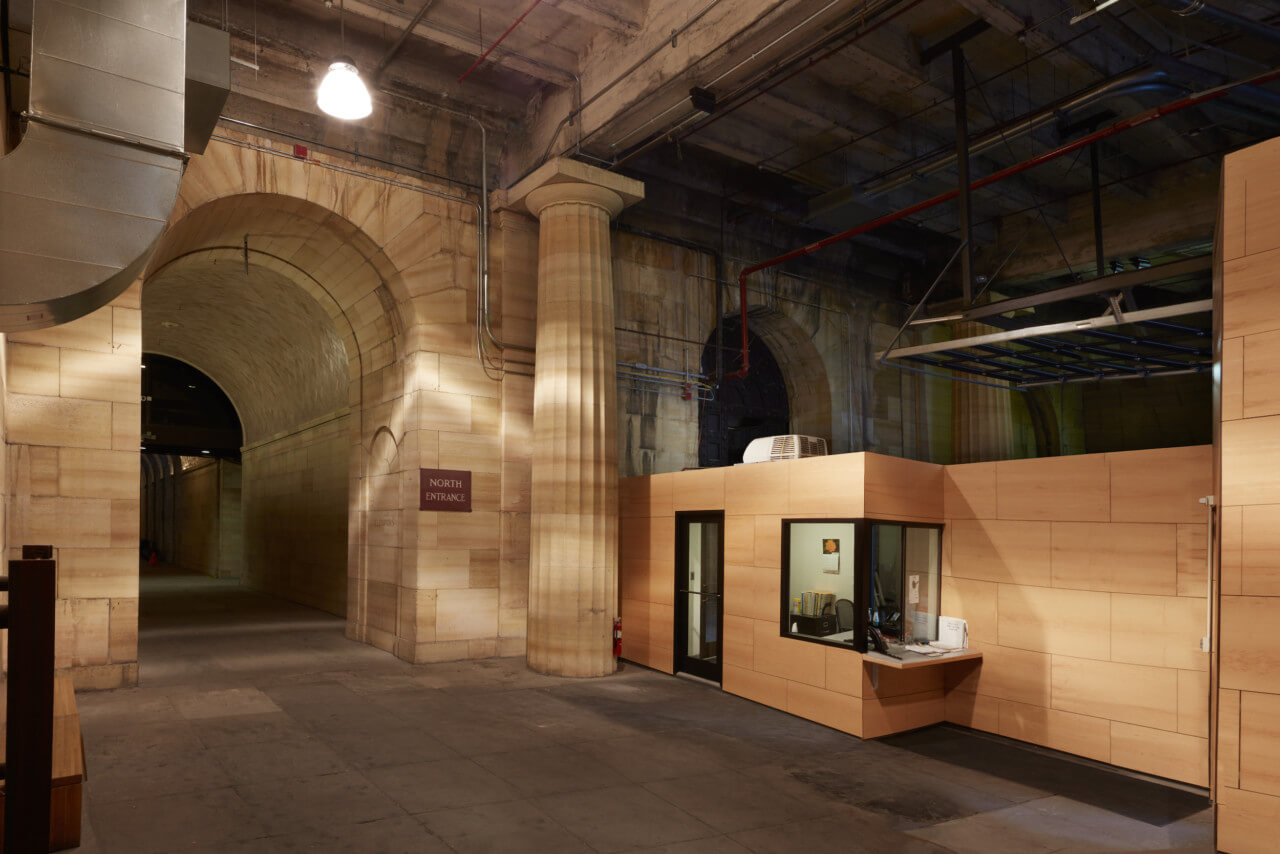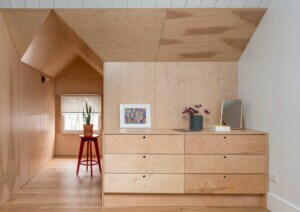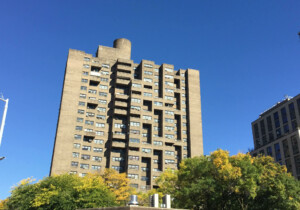The Philadelphia Museum of Art has announced that the Core Project, an exhaustive modernization and reimagining of the institution’s historic 1928 main building by Frank Gehry, will officially be unveiled to the public on May 7. The renovation has yielded a total of 90,000 square feet of newly created space within the stair-famous museum at the foot of the Benjamin Franklin Parkway and marks the conclusion of a painstaking four-year construction period and many more years of design and planning before that.
Accompanying the announcement of the Core Project’s completion, the museum has also released a series of before and after photos/renderings documenting the changes to transformed areas of the building, some of which even the most hardcore museum-going Philadelphians might not recognize even though a sense of material familiarity pervades the renovation.
“The value of Frank Gehry’s brilliant plan for the renewal and improvement of this great building will be clear for everyone to see and appreciate,” said Timothy Rub, the George D. Widener Director and chief executive officer of the Philadelphia Museum of Art, in a statement. “It both honors the past, respecting the character of this great building, and at the same time offers a compelling vision of the future.”

To celebrate the completion of the overhaul, the museum will operate on a pay-what-you-wish basis from May 7 through May 10, which is the date the museum first opened its doors in 1877 at its original home: the Beaux-Arts Memorial Hall (now the Please Touch Museum) located across the Schuylkill River in the Centennial District of Fairmount Park. The debut of Senga Nengudi: Topologies, the first major special exhibition to be presented at the mostly dormant-due-to-COVID museum in over a year, will coincide with the unveiling. The Rodin Museum, operated as an annex of the Philadelphia Museum of Art, will also reopen to the public for the first time since March 2020.
All said, the museum is still very much operating in pandemic mode with a timed-ticketing entry system, mask requirements, visitor temperature checks, social distancing guidelines, and other health and safety measures in place.

Major elements of the Core Project include:
- A rebuilt West Terrace, which has been renamed as the Robbi and Bruce Toll Terrace and now includes integrated ramps to better accommodate visitors of all abilities along with new digital signage, lighting, and a trio of bronze and glass entry vestibules.
- A revamped and refreshed Lenfest Hall, which serves as the main entrance to the museum and is now more spacious and light-filled with a new coffered ceiling, restored columns and walls, a Members Lounge, renovated Balcony Cafe, Gehry-designed admissions desks crafted from Douglas fir, and more. Two large-scale plaster bas-reliefs that have long graced the hall have also been restored and stabilized and a wall sculpture by Martin Puryear has been newly installed.
- Williams Forum, a soaring new public space that will be used for large-scale installations and to host a range of programming, now populates the space where the museum auditorium once was.
- The Vaulted Walkway, a 640-foot-long corridor spanning the length of the main building that has been off-limits to visitors for more than 50 years, has been reintroduced. (A restored section connecting to the North Entrance debuted in 2019.) Hidden below the walkway’s new stone pavers are “a remarkable array of new steam pipes, water lines, and conduits for electricity and digital communications that serve the entire building and represent a significant investment in the museum’s infrastructure” per the museum.
What’s more, areas previously devoted to offices, the museum restaurant, and retail have been transformed into two new mirroring gallery suites together totaling more than 20,000 square feet. One, the Robert L. McNeil, Jr. Galleries, will tell a “broader and more inclusive narrative of the development of early American art” from 1650–1850 with an emphasis on the “prominent role played by Philadelphia in this story,” according to the museum. The other, the Daniel W. Dietrich II Galleries, will zero in on the “creative spirit of Philadelphia today” and open with New Grit: Art & Philly Now, an exhibition of 25 contemporary artists with links to the City of Brotherly Love.

As noted by the museum, Gehry and the project team at Gehry Partners were “determined to honor the building’s original architectural language and materials” including the use of the same Minnesota quarry-sourced Kasota limestone used in the construction of the sprawling, Greek Revival building 93-some years ago. The museum’s original architects were Zantzinger, Borie and Medary, a major Philadelphia firm during the first half of the 20th century, along with Gilded Age giant Horace Trumbauer and his chief designer, Julian Abele, who was the first Black architect to graduate from the University of Pennsylvania’s Department of Architecture (now School of Design) and was credited for many of the landmark structure’s signature classical flourishes.
Said Gehry, who turned 92 last month: “The goal in all of our work at the Philadelphia Museum of Art has been to let the museum guide our hand. The brilliant architects who came before us created a strong and intelligent design that we have tried to respect, and in some cases accentuate. Our overarching goal has been to create spaces for art and for people.”
Focused largely on upgrading the museum’s aging infrastructure, improving accessibility, and creating new spaces within the footprint of the existing main building, the $233 million Core Project was completed as the latest phase of a multi-phase Facilities Master Plan, first approved by the museum’s Board of Trustees in 2004. Gehry was tapped to lead the Core Project two years later.
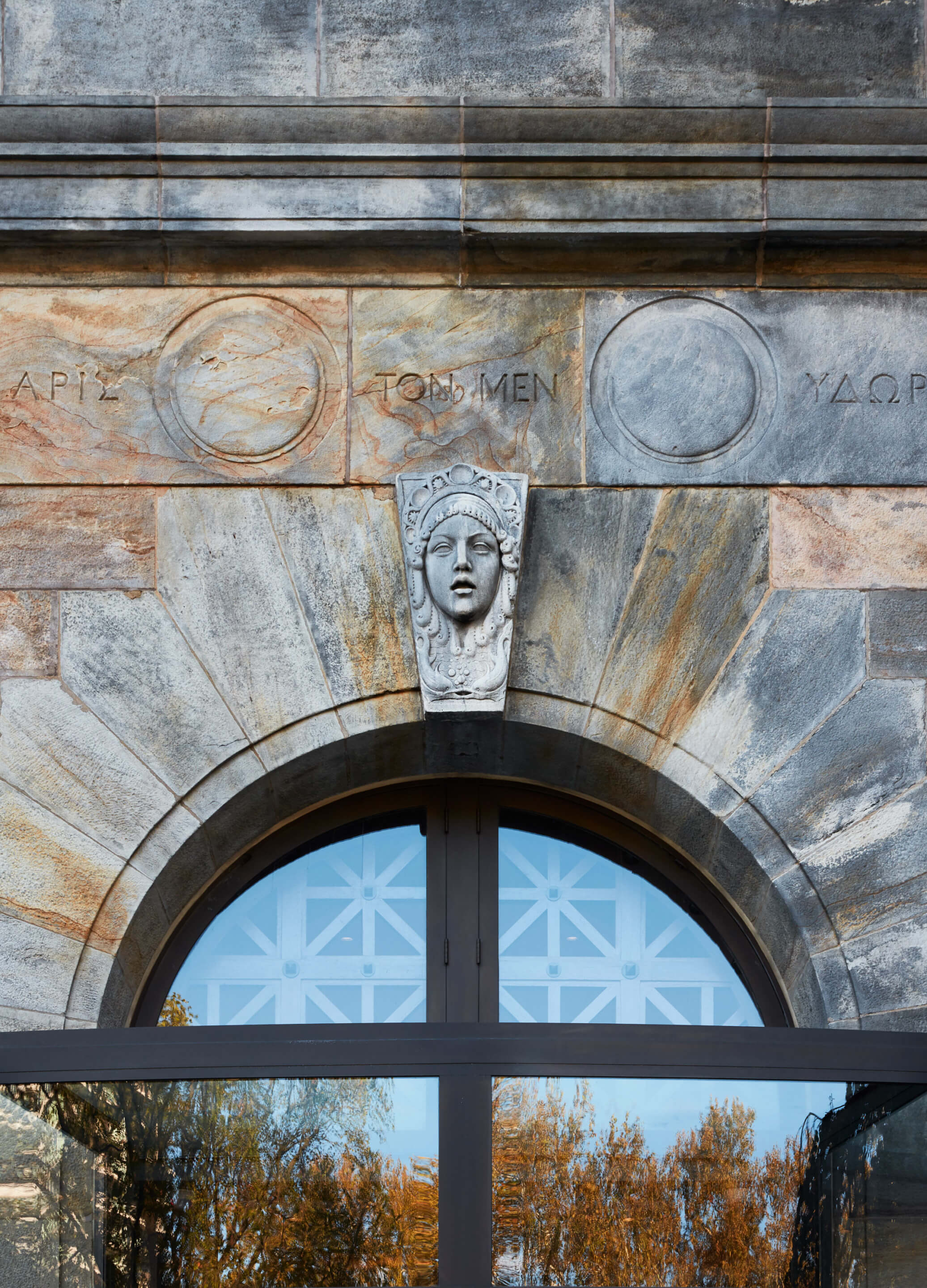
In what the museum calls a “closely integrated parallel project,” numerous major behind-the-scenes conservation- and sustainability-minded upgrades have been carried out in recent years by the museum in collaboration with the City of Philadelphia, which owns the building, the Philadelphia Energy Authority, and Johnson Controls. Among the upgrades: the upgrading of 11,000 light bulbs to LEDs, the installation of a new steam heating system and high-efficiency chiller, building automation upgrades, and much more.
Future phases of the Facility Master Plan will entail, among other things, construction of a new auditorium beneath the Toll Terrace, expanding the museum’s educational facilities, and transforming the attic of the museum’s main pavilion into a multifaceted public space.
Referring to the competition of Gehry’s Core Project, as “an investment in Philadelphia,” Leslie Anne Miller, chair of the museum’s Board of Trustees, noted in a statement that: “It is critically important not only for one of this city’s most significant cultural assets, but also for the future of the city. It is vital to our economic recovery, but the value of its impact will only become fully evident over time. I am especially eager to see us reconnect with schools and communities and to welcome families back to the museum.”






